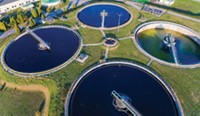Advertisement
Grab your lab coat. Let's get started
Welcome!
Welcome!
Create an account below to get 6 C&EN articles per month, receive newsletters and more - all free.
It seems this is your first time logging in online. Please enter the following information to continue.
As an ACS member you automatically get access to this site. All we need is few more details to create your reading experience.
Not you? Sign in with a different account.
Not you? Sign in with a different account.
ERROR 1
ERROR 1
ERROR 2
ERROR 2
ERROR 2
ERROR 2
ERROR 2
Password and Confirm password must match.
If you have an ACS member number, please enter it here so we can link this account to your membership. (optional)
ERROR 2
ACS values your privacy. By submitting your information, you are gaining access to C&EN and subscribing to our weekly newsletter. We use the information you provide to make your reading experience better, and we will never sell your data to third party members.
Separations
Membrane knocks out antibiotic-resistant bacteria
Combining UV disinfection with a photocatalytic membrane helps to reduce the bacteria and their genes in wastewater
by XiaoZhi Lim, special to C&EN
July 20, 2018

Wastewater treatment plants have become hotspots for the development of antibiotic resistance. There, surrounded by traces of antibiotics and other adversaries, large numbers of bacteria mingle and trade genes, including those for antibiotic resistance, and rapidly evolve into hardier strains. To reduce the spread of this resistance, wastewater treatment methods must eliminate not only bacteria but also antibiotic-resistance genes—floating free as fragments of DNA from broken cells—that can confer resistance onto living bacteria when they meet, says Yunkun Wang, a membrane scientist at Shandong University.
Now, Wang and Menachem Elimelech at Yale University have made a photocatalytic membrane that filters out and destroys bacteria and antibiotic-resistance genes upon exposure to ultraviolet light (Environ. Sci. Technol. 2018, DOI: 10.1021/acs.est.8b01888). In tests, the membrane killed 99.9% of antibiotic-resistant bacteria and inactivated from 20% to over 90% of various antibiotic-resistance genes in wastewater samples.
Membranes that have tiny pores can overcome the challenge of trapping small bits of DNA, but there is a trade-off, Wang says. Bacterial and genetic material build up on membranes, and ones with smaller pores are more susceptible to clogging. UV disinfection, on the other hand, excels at killing bacteria and deactivating genes, but low bacterial concentrations in wastewater make this process inefficient, he says.
To make their membrane, the researchers first coated a commercially available polyvinylidene fluoride membrane that has 17-nm-wide pores with dopamine, which polymerizes on the membrane surface. Then, they immersed the polydopamine-coated membrane in a solution of titanium dioxide nanoparticles, which stick evenly onto the coating. The resulting modified membrane’s pores were only 6 nm wide, small enough to trap free-floating DNA fragments.
The researchers collected wastewater effluent samples from a treatment plant in Jinan City, China, and prefiltered them to remove large solids, mimicking the first stage of the process in a real wastewater treatment plant. Then they pushed the wastewater samples through the modified membrane. The membrane captured up to 99.9% of the bacteria in the wastewater, verified by counting bacteria in the samples before and after passing through the membrane.
Upon exposure to UV, the TiO2 nanoparticles produce reactive oxygen species that kill bacteria and degrade genetic matter, Wang says. When the researchers exposed the filter to UV for 1 hour, up to 99% of the bacteria died, their tests showed. Although the process captured and deactivated over 90% of some antibiotic-resistance genes present, one group of genes for tetracycline resistance survived, with only 58% captured and 20% of those degraded.
Despite this, “the results are very promising,” says Zhi Zhou, a chemical engineer at Purdue University. Although it’s not surprising that this method would successfully kill bacteria, “it’s exciting to see that it also works well for antibiotic-resistance genes,” he says. The varying ability of reactive oxygen species to inactivate different resistance genes is not fully understood, but it seems to depend partially on what form the genes come in—whether in small, circular genetic elements called plasmids or entire genomes.
Advertisement
To test the membrane’s antifouling capability, the researchers allowed bacterial and genetic material to accumulate until the membrane was clogged. After about an hour of UV exposure, water flow through the membrane recovered almost completely.
Practically speaking, coating entire membranes with TiO2 nanoparticles at large scale may not be economically feasible, says Peiying Hong, an environmental engineer at King Abdullah University of Science & Technology. Membranes in wastewater treatment plants have to stay viable for years, she says, so longer-term studies are needed to make sure the antifouling capabilities, as well as the TiO2 nanoparticle coating, last. And while membranes and UV treatments are both used in existing wastewater treatment plants, they typically do not operate at the same location, making it tricky to implement filtration and disinfection together, she says.





Join the conversation
Contact the reporter
Submit a Letter to the Editor for publication
Engage with us on Twitter